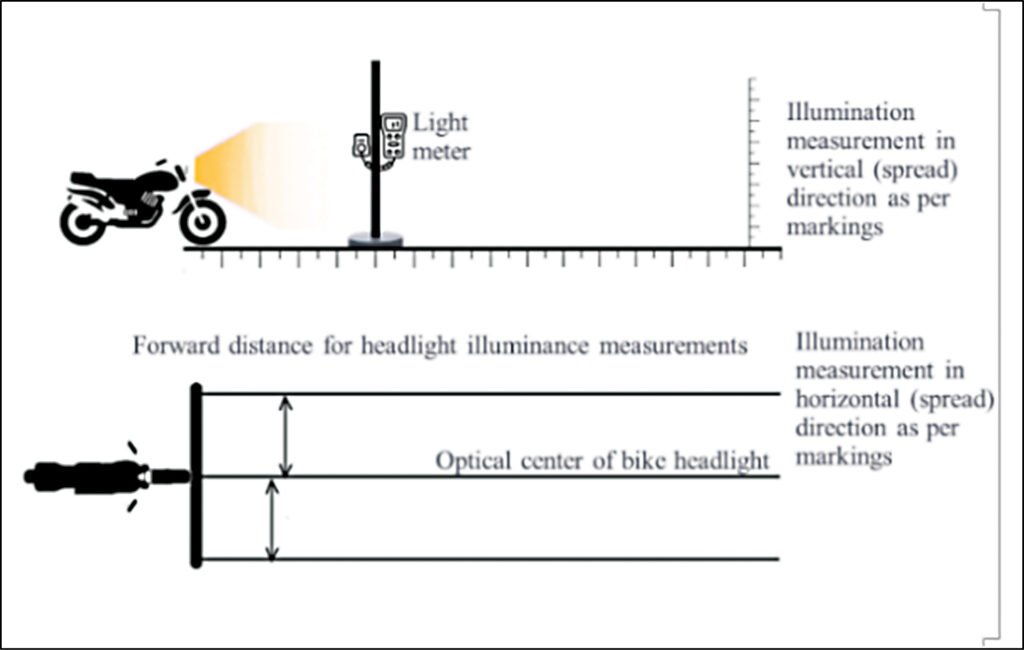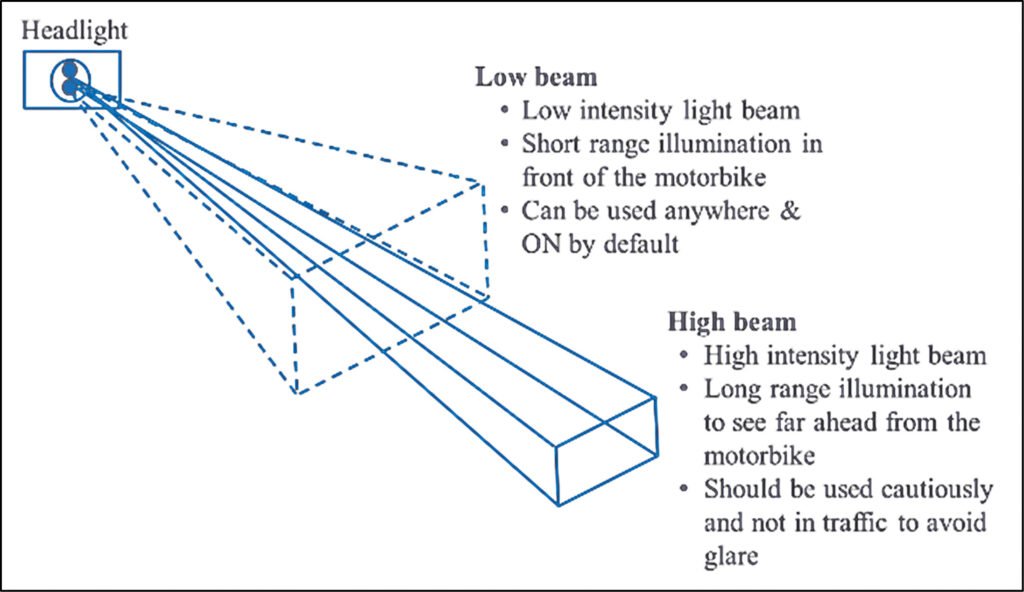
In recent times, urban landscapes have witnessed a surge in the use of two-wheeled motorized vehicles. One feature that plays a pivotal role in enhancing visibility and, consequently, diminishing the likelihood of collisions is the two-wheeler headlight. Dr. Vinod Karar, Dr. Neelima Chakrabarty, P. V. Pradeep Kumar & Dr. S. Velmurugan, Chief Scientists and Kamini Gupta, Senior Technical Officer, CSIR-CRRI elaborate on the importance of headlights in mitigating unseen hazards on the roads
One of the primary causes of road crashes involving two-wheelers is the failure of other road users to detect them in a timely manner. This unfortunate oversight typically stems from the compact size of two-wheelers and insufficient lighting. Two-wheeler headlights serve a myriad of crucial purposes:
- Enhancing Visibility: A well-illuminated path ensures that riders are conspicuous to other road users, substantially reducing the risk of road crashes.
- Elevating Situational Awareness: Adequate lighting empowers riders to better assess their surroundings, enabling them to make informed decisions and react promptly to potential hazards.
- Mitigating Blind Spots: Properly functioning headlights can help diminish the size of blind spots around the vehicle, thus enhancing overall safety.
- Boosting Braking Distance: Improved visibility permits quicker reaction times when braking, reducing the risk of rear-end collisions.
- Minimizing Collision Risk: Collectively, these factors work concertedly to significantly lower the risk of collisions and enhance overall road safety.
The Brilliance Breakdown: Lumens vs. Lux
The efficacy of a two-wheeler’s headlight in augmenting visibility is profoundly influenced by its intensity, quantified in lumens. Lumens measure the total quantity of light emitted by the bulb – simply put, brighter light equates to better visibility. Lumens serve as the metric for expressing headlight intensity. However, it is not solely about the quantity of light; it is also about where those light lands. This is where illuminance, expressed in lux, comes into play. Illuminance quantifies the amount of light striking a specific surface, determining how effectively the road ahead is illuminated.
As we plan new landscapes of transportation, ongoing innovation and consistency in design and fabrication in headlamp technology is imperative for ensuring safer roads, particularly in ever-changing conditions
Harmonizing Brightness and Glare: Low vs. High Beam
In conditions of reduced illumination, such as dawn, dusk, or poorly lit areas, a brighter headlight can substantially elevate visibility. However, the use of high beam headlights in well-illuminated regions can result in glare, impairing the vision of other road users. Conversely, relying on low beam headlights in dimly lit areas might compromise the rider’s visibility and heighten the risk of road crashes. Striking the right balance is pivotal. Greater illuminance signifies that more light reaches the road surface, aiding riders in spotting potential hazards such as potholes, debris, or even animals.

Guiding Light: The Significance of Headlight Alignment
Brightness and intensity constitute only a portion of the equation. Equally vital is the direction in which the headlight beams are aimed. Misaligned headlights can give rise to glare, diminish visibility, and even lead to road crashes. The distance, spread, and field of view illuminated by a two-wheeler’s headlight can vary, contingent upon factors such as headlight type, motorcycle design, and vehicle purpose. It is imperative that the headlight illuminates a sufficiently wide area, ensuring that the rider enjoys clear visibility of the road and potential hazards on both sides, without imposing inconvenience or danger upon other road users.
Global Concerns: Two-wheelers in Developing Nations
In developing nations, motorized two-wheelers (MTWs) represent a ubiquitous mode of transportation. Nonetheless, they also pose a substantial risk to riders and other road users. One of the most prevalent issues contributing to MTW road crashes is the ‘Look but Fail to See’ error, often entailing another road user failing to yield to an approaching motorbike on the main road when exiting from a side road. These road crashes constitute a burgeoning public health concern, contributing significantly to overall traffic injuries in these regions.

The Struggle Against Fatal Crashes: Research Insights
Extensive research has delved into understanding the causes of fatal motorbike crashes. These studies have unveiled those factors such as the prevalence of protective measures and compliance with road safety regulations. Even the physical attributes of riders (including weight) can wield influence over the types and severity of injuries sustained. Specifically, obese motorcyclists tend to experience distinct types of physical injuries and endure longer hospital stays in comparison to riders of average weight. This underscores the importance of safety measures like appropriate helmets and protective clothing.
Conspicuity Crisis: The Role of Lighting
A noteworthy risk factor discerned in motorcycle crashes is low conspicuity – the rider’s capacity to capture the attention of other road users. Elements contributing to low conspicuity encompass the size and shape of the motorcycle, diminished brightness, irregular contours, and inadequate backdrop contrast. Enhancing the intensity of the motorized two-wheeler’s headlamp has demonstrated its potential to augment visibility and curtail the likelihood of road crashes. Implementing intelligent headlamp intensity management systems can further enhance conspicuity and contribute to safer roads.
A Study carried out on Indian roads aimed at improving road safety for two-wheeled motorized vehicles on the crowded streets of India was done. The methodology involved use of two-wheelers commonly found on Indian highways, questionnaire to their riders, and light meter to measure headlight illumination. The headlight illuminance was analyzed in both low beam and high beam modes, taking into account parameters such as forward distances, vertical heights and horizontal positions.
Adjustments to the mounting height of the light meter were made to simulate various light intensity measurements at different heights, simulating real-world conditions on Indian roads.

Principal Observations and Results
- Illuminance Profiles: Headlight illuminance levels varied with forward distances, with some vehicles exhibiting a decrease and others a rise, casting light on the unique challenges Indian riders face in terms of inconsistent light output from the vehicle headlights.
- Vehicle Age: The age of two-wheeled vehicles emerged as a significant factor influencing headlamp performance, which is especially relevant in India, where a wide variety of vehicles share the roads. Due to deteriorating polycarbonate coverings, the illumination of older vehicles was diminished.
- LED vs. Halogen: LED headlights outperformed their halogen counterparts in terms of illumination, raising concerns about the adoption of advanced lighting technology in the Indian context.
- Low Beam vs. High Beam: Distinct variations in illuminance values were observed between low beam and high beam modes, emphasizing the need for adaptive illumination technology to accommodate the dynamic road conditions of India.
- Subjective Evaluation:
The study included subjective rider evaluations from the Indian perspective, providing unique insight into the difficulties and expectations of motorcyclists navigating Indian traffic.
Implications of the study
This study provides invaluable insights into the intricate dynamics of two-wheeler headlight efficacy on India’s vibrant and diverse streets. As Indian cities continue to expand and urban traffic becomes more difficult to navigate, this study paves the way for informed decisions and improvements in headlight technology.
Lighting the Way for Safer Roads
In the context of two-wheelers, the significance of headlight technology cannot be overstated. Ageing vehicles contend with fading illumination, while LED technology shines brilliantly. Nevertheless, a glaring issue persists – consistency, factor that underscores the need for precision. two-wheeler headlights transcend mere beams of light; they stand as guards of safety. It is attention to detail, rather than technology alone, that will illuminate our path toward safer roads.
 TrafficInfraTech Magazine Linking People Places & Progress
TrafficInfraTech Magazine Linking People Places & Progress


